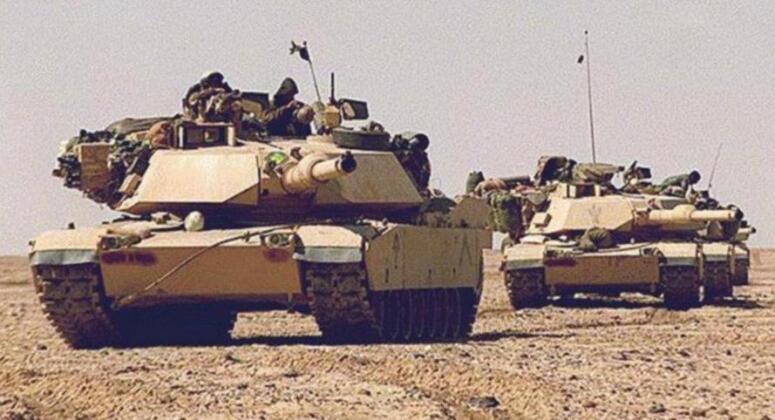News
American Depleted Uranium Weapons For the Ukrainian Army: Why is Russia So Worried?
Russia has issued a strong warning against the supply of depleted uranium weapons to the Ukrainian Military, amid concerns that a wide range of Western tanks and armoured vehicles set to be delivered to the country are designed specifically to use such munitions. Head of the Russian delegation to the Vienna Negotiations on Military Security and Arms Control Konstantin Gavrilov cautioned to this effect on January 25: “We know that Leopard 2 tanks, as well as Bradley and Marauder armoured fighting vehicles, can use depleted uranium shells, which can contaminate terrain, just like it happened in Yugoslavia and Iraq. If Kiev were to be supplied with such munitions for the use in western heavy military hardware, we would regard it as the use of ‘dirty nuclear bombs’ against Russia, with all the consequences that entails.” Regarding the possible responses Russia could take, Gavrilov elaborated: “If Washington and NATO countries provide Kiev with weapons for striking against the cities deep inside the Russian territory and for attempting to seize our constitutionally affirmed territories, it would force Moscow to undertake harsh retaliatory actions. Do not say that we did not warn you.” A number of analysts took this to be an implied threat of a Russian nuclear response.

Depleted uranium is prized as one of the heaviest elements on the planet, and is made from low-level radioactive waste left over from the manufacture of nuclear fuel or nuclear warheads which makes it affordable to produce in large quantities. Although it has been used in the armour of American M1 Abrams tanks, those intended for the Ukrainian Army will not have this armour the composition of which is a sensitive Pentagon secret. Aside from armour, however, depleted uranium is more widely used in anti armour weapons including the rounds fired by tanks and other combat vehicles to provide a greater penetrative capability. A notable example is the M829 armour fin-stabilised discarding sabot round which is compatible with M1 Abrams and Leopard 2 tanks, older versions of which were employed extensively by the Abrams during the Gulf War. Such munitions could be particularly useful in the Ukrainian theatre as Russia has continued to improve the capabilities of its frontline armour. The potential environmental impacts of their use, however, can be calamitous, with the radioactive particles emitted into the air when depleted uranium rounds are used having half-lives of over four billion years. The easily inhalable dust can travel for well over 40km from the site of each impact, creating a mass area effect.

The effects of depleted uranium shelling were seen in the Gulf War, with British Royal Navy Commander Robert Green reporting: “a surge of unexplained illnesses, cancers and children born with genetic deformities among the Iraqi people, especially in the south near the battlefields.” A confidential UN report leaked in May 1999 similarly concluded regarding depleted uranium weapons: “this type of ammunition is nuclear waste, and its use is very dangerous and harmful.” In the subsequent Iraq War the following decade the city of Fallujah was particularly heavily bombarded by depleted uranium weapons by U.S. forces, with Professor Chris Busby. One of the authors of a survey of 4,800 Fallujah residents wrote regarding the connection between these attacks and the rapid increase in cancers and birth defects that followed: “to produce an effect like this, some very major mutagenic exposure must have occurred in 2004 when the attacks happened.” He concluded that some kind of uranium weapon had to have been the cause.
The Fallujah survey by 11 experts, which covered over 700 households, concluded that the effects on the population were “similar to that in the Hiroshima survivors who were exposed to ionising radiation from the bomb and uranium in the fallout.” Depleted uranium weapons were found to have had highly similar effects in Yugoslavia, and were also used for limited strikes by U.S. forces in Syria. Although Operation Desert Storm was authorised by the United Nations Security Council, the 2003 invasion of Iraq and bombings of Syria and Yugoslavia were widely considered by legal experts to be acts of aggression in violation of international law. This only increased the controversy surrounding depleted uranium attacks in these conflicts and the contamination that resulted. Legal arguments against supplying depleted uranium weapons to Ukraine, by contrast, are limited, and while Russia considers Ukraine’s ethnically Russian Donbas regions to be part of its territory, this is not internationally recognised meaning use of depleted uranium rounds there would constitute an internal Ukrainian affair. How Russia may respond to such weapons being used against the Russian population however, or against its own forces, remains to be seen.
Note: Many of the details on previous depleted uranium attacks, and the causes of the U.S.-led military campaigns in which such weapons were widely used, were taken from the upcoming book by international security scholar A. B. Abrams: ‘Atrocity Fabrication and Its Consequences: How Fake News Shapes World Order.’ It can be pre-ordered here.












